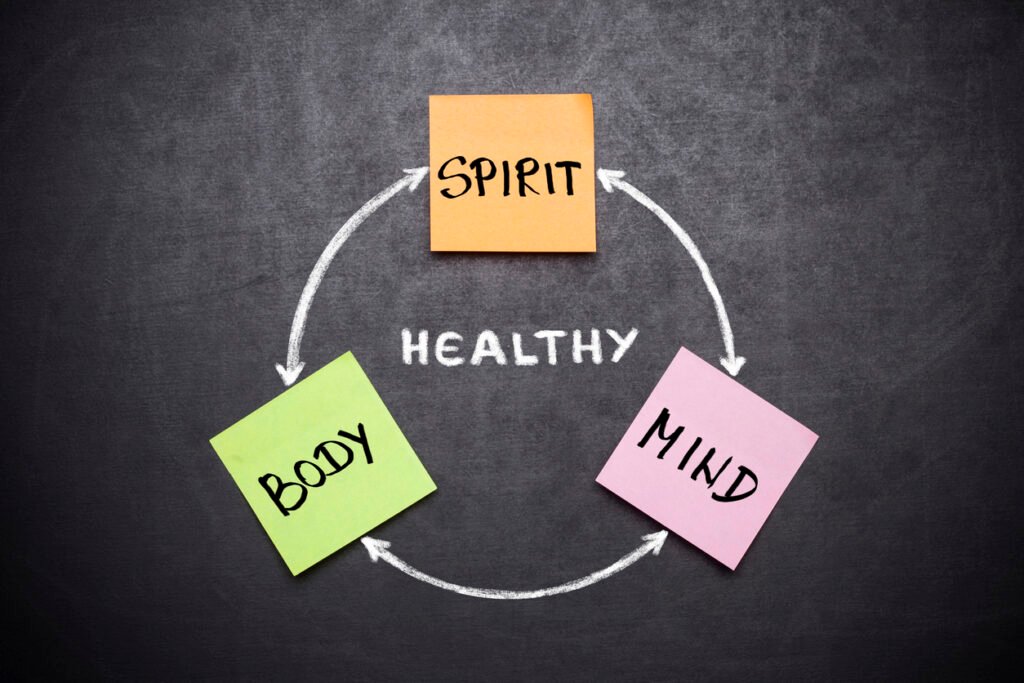
Holistic Wellness Practices
Holistic wellness goes beyond merely addressing physical health; it encompasses a comprehensive approach to nurturing your mind, body, and soul. In this article, we’ll delve into the depths of holistic wellness, exploring how it can positively impact your life and provide you with a harmonious balance.

Holistic wellness is not just about following a few health trends or trying the latest fad. It’s about cultivating a deep understanding of your own well-being and nurturing all aspects of yourself.
1. Holistic Wellness Practices ( intro )
At its core, holistic wellness acknowledges the intrinsic connection between your physical health, emotional state, mental clarity, and spiritual alignment. It’s a recognition that these aspects of your being are intertwined, and nurturing one area can positively affect the others.
2. The Four Pillars of Holistic Wellness
2.1 The Physical Pillar
Physical well-being forms the foundation of holistic wellness. Regular exercise, a balanced diet, sufficient sleep, and proper hydration are essential components.
2.2 The Emotional Pillar
Emotional wellness involves understanding and managing your feelings effectively. This pillar emphasizes self-care, stress reduction, and fostering healthy relationships.
2.3 The Mental Pillar
Mental wellness focuses on cognitive health. Mental challenges, such as negative thought patterns, can impact your overall well-being. Practices like mindfulness and positive affirmations enhance this aspect.
2.4 The Spiritual Pillar
The spiritual aspect of holistic wellness transcends religious beliefs. It’s about connecting with your inner self, finding purpose, and experiencing moments of transcendence.
3. Key Holistic Wellness Practices
3.1 Mindful Meditation: Nurturing Mental Clarity
Mindful meditation encourages being present in the moment, reducing stress, and enhancing focus. It’s a practice that can be incorporated into daily life, leading to improved mental clarity.
3.2 Balanced Nutrition: Fueling Your Body
Eating a variety of nutrient-rich foods provides the energy your body needs. A balanced diet supports your physical well-being and contributes to emotional and mental health.
3.3 Yoga and Physical Flexibility
Yoga combines physical postures with breath control, promoting flexibility, strength, and relaxation. It’s a holistic practice that benefits both the body and mind.

3.4 Cultivating Emotional Intelligence
Emotional intelligence involves recognizing, understanding, and managing your emotions and those of others. It’s a crucial skill for building healthy relationships.
3.5 Connecting with Nature
Spending time in nature has been linked to reduced stress levels and improved mood. Whether it’s a hike in the woods or a walk on the beach, nature offers solace and rejuvenation.
3.6 Holistic Approaches to Stress Management
Stress is a common aspect of modern life. Holistic approaches to stress management include deep breathing exercises, progressive muscle relaxation, and engaging in hobbies you love.
4. The Interconnectedness of Holistic Wellness
Holistic wellness practices recognize that your mind, body, and soul are interconnected. Nurturing each aspect contributes to a harmonious and balanced life.
5. Creating Your Holistic Wellness Plan
Designing a holistic wellness plan involves setting realistic goals for each pillar. A personalized approach ensures that your plan aligns with your individual needs and preferences.
6. Incorporating Mindfulness into Daily Life
Mindfulness isn’t just a practice; it’s a way of life. Being mindful in everyday activities enhances your awareness, reduces stress, and promotes well-being.
7. The Power of Positive Affirmations
Positive affirmations are powerful tools for cultivating a positive mindset. By repeating affirmations that resonate with you, you can reshape your thought patterns and beliefs.
8. Holistic Wellness and Its Impact on Relationships
When you prioritize holistic wellness, you bring your best self to your relationships. Improved self-awareness and emotional regulation positively influence how you interact with others.
9. Embracing Holistic Practices: A Journey to Self-Discovery
Embarking on a holistic wellness journey is an opportunity for self-discovery and growth. It’s a chance to explore different practices and find what resonates with you.
10. Holistic Wellness for the Long Haul
Holistic wellness is a lifelong commitment. It’s not a quick fix but a continuous journey that evolves as you do.
11. Busting Common Myths About Holistic Wellness
There are misconceptions surrounding holistic wellness. Clarifying these myths can help individuals embrace a more accurate understanding of the concept.
12. Holistic Wellness for Different Age Groups
Holistic practices can be tailored to different age groups. Children, adults, and seniors can all benefit from practices that address their unique needs.
13. Exploring Alternative Therapies
Holistic wellness encompasses a wide range of practices, including acupuncture, aromatherapy, and energy healing. Exploring these alternatives can add depth to your well-being journey.
14. Taking the First Step: Your Holistic Wellness Journey Begins Here
Embarking on a holistic wellness journey starts with a single step. Whether it’s trying a new practice or making a small change, each step contributes to your overall well-being.
Conclusion
Holistic wellness is a tapestry woven from the threads of physical health, emotional intelligence, mental clarity, and spiritual connection. By embracing holistic practices, you can nurture each aspect and create a harmonious and fulfilling life. Remember, your well-being is a lifelong journey worth investing in.
https://en.wikipedia.org/wiki/Wellness_(alternative_medicine)
read aboutWhat is the secret to living a healthy lifestyle?






